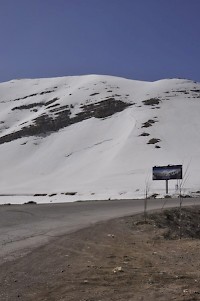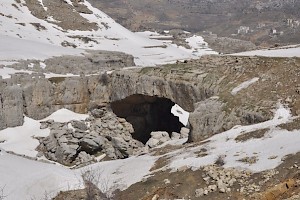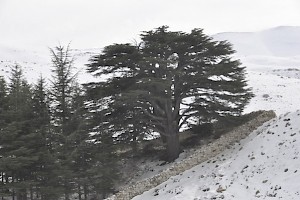Lebanon Mountains
Q333711Lebanon Mountains: the central part of the mountain range along eastern Mediterranean. The northern summits are referred to as Mount Lebanon.

The eastern shore of the Mediterranean is the place where the African tectonic plate collides with the Arabian plate. As a consequence, there are large mountains. In southern Turkey, they are called the Amanus Mountains, which are separated by the river Orontes from the Bargylus Mountains in Syria. After the Homs gap follows the Lebanon, which is separated by the river Litani, the ancient Leontes, from the Mountains of Judah.
Of these mountain ranges, the Lebanon is the highest. While there is hardly any snow on the summits of the other ranges, the Lebanon is perennially covered in white. In fact, the word Lebanon is derived from the Semitic root lbn, "white". The highest peak in the Lebanon is the Qurnat as-Sawda, which rises 3088 meters above the sea, which is higher than Mount Olympus. And just like the last-mentioned summit was considered to be the abode of the gods, so there was a Ba'al of the Lebanon.

The Lebanon blocks rains coming from the west, which pour down on its forest-covered western slopes, where the water can be used for irrigation. This makes it possible to cultivate fruits on the western slopes; however, there is not enough space to produce the wheat to feed the coastal cities (Sidon, Berytus, Byblos, Tripoli). Hence, the Phoenicians had to import it from overseas or to obtain it from the Aramaeans in the Bekaa valley, east of the Lebanon.
On the eastern flanks of the Lebanon, the melting snow creates many small rivers, which empty themselves into the Litani. Their waters make the Bekaa one of the most fertile regions in the Near East.

The best-known product of the Lebanon, however, is wood; the cedars of the Lebanon. As a consequence, the Assyrians and Babylonians called the Libanon "the cedar mountain". The trees are already mentioned in the Epic of Gilgameš, while the Bible mentions king Hiram of Tyre sending carpenters and masons to Jerusalem, to build a palace for king Davidnote and records negotiations between king Solomon and king Hiram about cedar wood for the building of the Temple.note
We know of Assyrian kings imported cedar wood, and it is also mentioned by the Achaemenid king Darius I the Great, who used this wood to build his palace in Susa.note
When standing on the western slopes of the Lebanon at dusk, it is possible to discern the mountains of Cyprus, dark against the light of the setting sun.